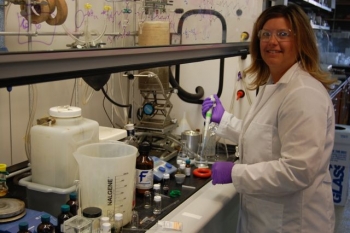
School:
Grade Level:
Teaching Position:
Supervisor:
Department:
Mentor:
Research Project Year:
Research Project Title:
Research Project Description:
I had the opportunity to assist Roey Amir and Lorenzo Albertazzi in their development of multi-functional trackable dendrimers. A dendrimer is a synthetic macromolecule which structure is based on molecular “branches” that spread out from a central core. The purpose of my research was to prove that dendrimers could be used as platforms for drug delivery without the toxic side effects. First, trackable multifunctional dendridic scaffolds with high internal loading capacity were designed and synthesized. For model drug delivery molecules we used two different fluorescent dyes. Multiple (Coumarin dye) units were loaded internally to be cleaved by hydrolysis. One (Alexa647 dye) was attached to the periphery of the dendrimer to be cleaved later by an enzyme. This allowed us to simultaneously monitor the dendrimer and release of the cargo inside of living cells. Next, we incubated mouse melanoma cells with a dye only and observed them under a microscope for the appearance of fluorescence. It showed no internalization through endocytosis of the cell, indicating that the dye alone is not membrane permeable. We then incubated the melanoma cells with the dye-loaded dendrimer and the images show coumarin release inside of the cells. A blue fluorescence signal was observed in the cytoplasm and this signal intensity increased over a period of 8 hours. This proves you need a dendrimer as a carrier for the cargo to be internalized into the cell. Dendrimers as drug carriers are being widely investigated for cancer: to target specific cells with no toxic side effects.
Research Project Attachments:
| Attachment | Size |
|---|---|
| 1.79 MB |
Curriculum Project Year:
Curriculum Project Title:
Curriculum Project Description:
The goal of this project was to enhance my 7th grade curriculum by developing hands-on activities to make it more relevant and meaningful to the students. These supplemental lessons using yeast were designed to help students gain a better understanding of the cell biology and genetics standards. Fundamental topics include endocytosis, asexual reproduction, respiration, genetics and cancer.
